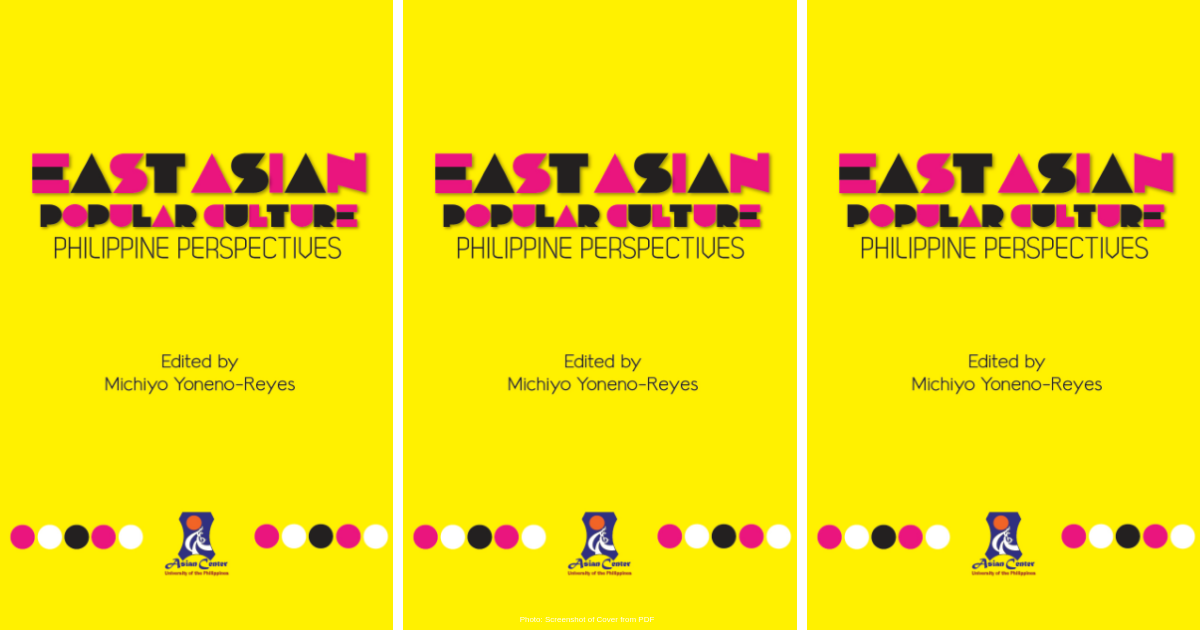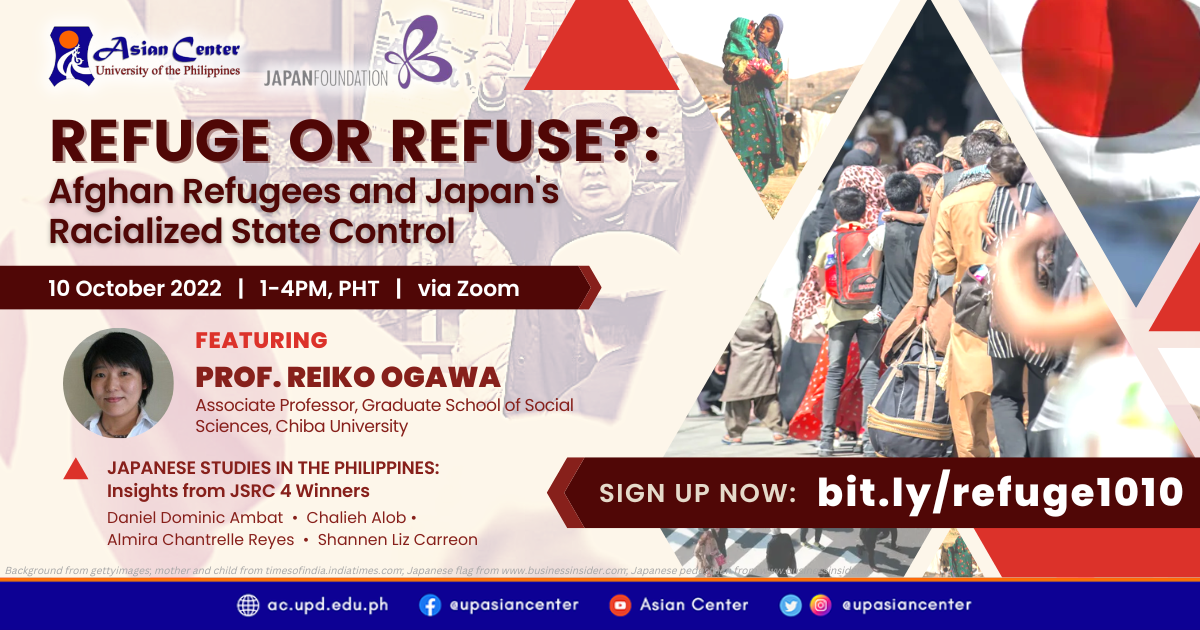
The East Asian Popular Culture: Philippine Perspectives is now available for download as a PDF. Edited by Michiyo Yoneno-Reyes and published in 2013 by the UP Asian Center, the book contains chapters analyzing Korean and Japanese popular culture, including dramas, films, and anime, as well as fandom and cosplay.
EXCERPTS
First, in the Philippines, the impact of popular culture of East Asia (referring to the area corresponding to the lands and seas of China, Korea and Japan at large through historical times up to the present), which partly became observable since around the 1980s, has escalated since the 2000s. This goes as well with the world trend. This phenomenon is worth monitoring as it may be one of the forces that have led to the decentralization of the popular culture industry, which has been dominated substantially by the United States (as epitomized by Hollywood films, Disney products, American music, etc.) since the twentieth century. The empirical knowledge and perspectives of the young Filipino scholars in this volume have a great potential of contributing to the discourse on diversification of popular culture in the twenty-first century in the midst of globalization.
Second, the increasing visibility of East Asian popular culture in the Philippines since the 2000s implies historical turn in Filipinos’ consumption of foreign popular culture. As for TV dramas, Marian F. Gongora reminds us that Filipinos had embraced mainly American and Latin American TV dramas until the 1990s (chapter 7). But the great success in the country in 2003 of ‘Meteor Garden,’ a Taiwanese drama based on a Japanese manga, and the massive entry of Korean dramas in the following years almost wiped out American and Spanish dramas from Philippine TV. (x)
TABLE OF CONTENTS
Introduction
Michiyo Yoneno-REYES
Staging Masculinity: KAT-TUN and Dramaturgy in a Japanee Pop Concert
Herlyn Gail ALEGRE
The Circumvention of of the Shojo Image and Violence as a Spectacle in 'Deadman Wonderland' and 'Mirai Nikki'
Francesca AGUILUZ
'Good Wife, Wise Mother' in 2008: Kobayashi Mika in 'Departures' (Okurubito)
Giselle JIMENEZ
Portraits of Homosexual Men in Selected Contemporary Japanese Films
Mario Rico Micu FLORENDO
Film It and They Will Come: Drama-Induced Tourism in South Korea
Myrtle Ann ZABALA
The Identification and Distancing of Filipino Korean Language Students in Watching Korean Telenovelas
Marian GONGORA
Pinoy Cosplay: Profile of Cosplayers in the Philippines
Dorcas Juliette RAMOS
They Who "Worship": Profiling the Fandom of Asian Celebrities
John Rex DE GUZMAN
ABOUT THE BOOK
The book was published with funding from the Japan Foundation Manila. Dr. Michiyo Reyes was Associate Professor at the UP Asian Center. Authors of the chapters except one were graduate students at the time of publication. Chapter 4 is not available as a PDF.
The Asian Center offers M.A. degrees in Asian Studies with four fields of specialization: Northeast Asia, Southeast Asia, South Asia, and West Asia. The Center also has an M.A. program in Philippine Studies that allows students to major in Philippine society and culture, Philippine foreign relations, or Philippine development studies. The Center offers a Ph.D. program in Philippine Studies in conjunction with the College of Arts and Letters and the College of Social Sciences and Philosophy. Get an overview of these graduate programs. The Asian Center also publishes an open-access, peer-reviewed journal, Asian Studies: Journal of Critical Perspectives on Asia.





